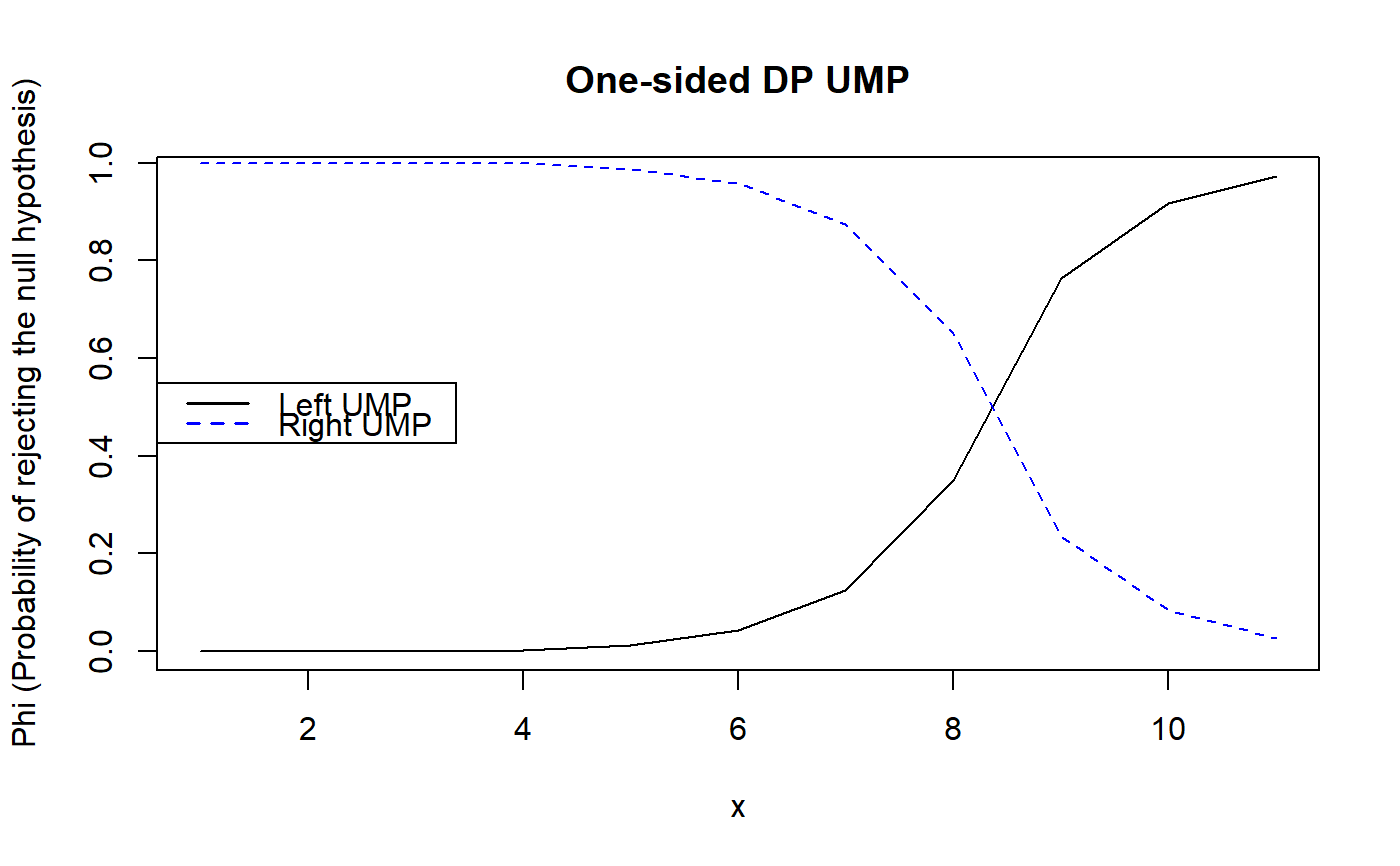Calculating Simple and One-Sided DP-UMP Tests
UMP.RdCalculating Simple and One-Sided DP-UMP Tests
umpLeft(theta, size, alpha, epsilon, delta) umpRight(theta, size, alpha, epsilon, delta)
Arguments
| theta | The success probability for each trial (parameter \(\theta\) in Binomial(n, \(\theta\))) |
|---|---|
| size | The number of trials in Binomial distribution (parameter n in Binomial(n, \(\theta\))) |
| alpha | Level of the tests |
| epsilon | Parameter \(\epsilon\) in \((\epsilon, \delta)\)-DP |
| delta | Parameter \(\delta\) in \((\epsilon, \delta)\)-DP |
Value
A vector of one-sided DP-UMP tests
References
Awan, Jordan Alexander, and Aleksandra Slavkovic. 2020. "Differentially Private Inference for Binomial Data". Journal of Privacy and Confidentiality 10 (1). https://doi.org/10.29012/jpc.725.
See also
Calculating unbiased two-sided DP-UMP tests (UMPU) and
asymptotically unbiased two-sided DP-UMP tests (umpuApprox)
Examples
#leftUMP left <- umpLeft(theta = 0.4, size = 10, alpha = 0.05, epsilon = 1, delta = 0.01) #rightUMP right <- umpRight(theta = 0.4, size = 10, alpha = 0.05, epsilon = 1, delta = 0.01) #plot plot(left, type = "l", main = "One-sided DP UMP", xlab = "x", ylab = "Phi (Probability of rejecting the null hypothesis)")
